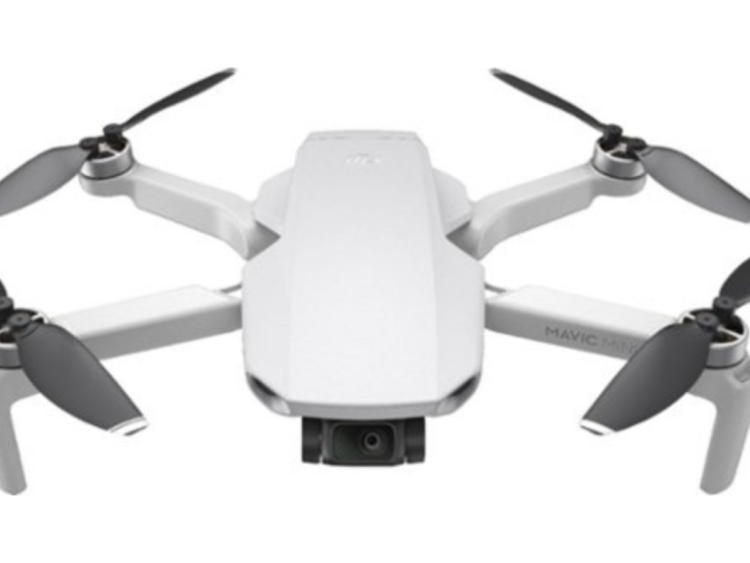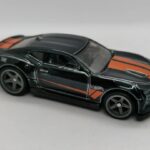Toy Drones: Exploring the Fascination and Future of Miniature Flight
Introduction
Toy drones have captivated the imaginations of children and adults alike, blending the excitement of remote-controlled flight with the technological advancements of the modern age. These miniature marvels, ranging from simple, inexpensive models to advanced, feature-rich variants, offer a glimpse into the world of aviation and robotics. This article delves into the history, types, technological advancements, safety concerns, and future prospects of toy drones, providing a comprehensive overview of this fascinating hobby and its potential impacts.
The Evolution of Toy Drones
Early Beginnings
The concept of toy drones can trace its roots back to the early 20th century, with the advent of remote-controlled (RC) aircraft. These early models were rudimentary, often powered by rubber bands or simple combustion engines, and controlled via basic radio frequencies. However, they laid the groundwork for the sophisticated drones we see today.
In the late 2000s, significant advancements in battery technology, lightweight materials, and electronic miniaturization spurred the development of more sophisticated RC aircraft. The introduction of affordable lithium-polymer (Li-Po) batteries provided longer flight times and more power, while advancements in gyroscopic stabilization and brushless motors enabled more precise control and stability.
The Rise of Quadcopters
The term “drone” became synonymous with quadcopters, which feature four rotors and a central body. This design offers several advantages, including stability, maneuverability, and the ability to hover in place. The rise of quadcopters in the early 2010s marked a significant turning point in the popularity of toy drones.
Companies like DJI, Parrot, and Hubsan led the charge, introducing consumer-friendly models that were easy to fly and packed with features like cameras, GPS, and automated flight modes. These innovations democratized drone flying, making it accessible to a broader audience and sparking a surge in popularity.
Types of Toy Drones
Toy drones come in various shapes and sizes, each designed for different purposes and skill levels. Here, we categorize them into several main types:
Mini Drones
Mini drones, also known as micro or nano drones, are the smallest and most affordable category. Typically measuring less than six inches in diameter, these drones are perfect for indoor flying and beginner pilots. Despite their small size, many mini drones come equipped with features like altitude hold, headless mode, and basic cameras.
Examples:
- Cheerwing CW4: A compact drone with a built-in camera, perfect for indoor flying.
- Hubsan X4 H107C: Known for its durability and ease of use, making it a popular choice for beginners.
Camera Drones
Camera drones are designed for aerial photography and videography. They come equipped with high-definition cameras and often feature gimbal stabilization for smooth footage. These drones range from budget-friendly models with basic cameras to high-end versions with 4K resolution and advanced features like follow-me mode and obstacle avoidance.
Examples:
- DJI Mini 2: A lightweight, portable drone with 4K video capabilities and impressive flight time.
- Holy Stone HS720: A mid-range drone offering 2K video quality and GPS-assisted flight.
Racing Drones
Racing drones are built for speed and agility, designed to compete in drone racing leagues and events. These drones are lightweight, often customizable, and require a higher skill level to operate effectively. They typically lack the advanced stabilization and automated features of camera drones but make up for it with their blistering speed and responsive controls.
Examples:
- EMAX Tinyhawk: A popular entry-level racing drone known for its speed and maneuverability.
- Arris X-Speed 250B: A more advanced racing drone that can be customized and upgraded for better performance.
Educational Drones
Educational drones are designed to teach users about the principles of flight, robotics, and programming. These drones often come in kit form, requiring assembly, and can be programmed using languages like Scratch or Python. They are popular in STEM (Science, Technology, Engineering, and Mathematics) education and robotics clubs.
Examples:
- Parrot Mambo: A modular drone that can be equipped with accessories like a grabber arm or cannon, ideal for learning and experimentation.
- Tello EDU: A programmable drone that supports Scratch and Python, making it perfect for educational purposes.
Technological Advancements in Toy Drones
The rapid development of technology has significantly enhanced the capabilities of toy drones, making them more accessible and feature-rich. Here are some key technological advancements:
Improved Flight Control Systems
Modern toy drones are equipped with advanced flight control systems that use gyroscopes and accelerometers to maintain stability and improve maneuverability. These systems, combined with responsive remote controls and mobile app interfaces, allow even novice pilots to fly with ease.
GPS and Automated Flight Modes
Many mid-range and high-end toy drones now come with GPS capabilities, enabling features like waypoint navigation, return-to-home, and follow-me mode. These automated flight modes make it easier for users to capture complex aerial shots and enhance the overall flying experience.
Enhanced Camera Technology
Camera drones have seen significant improvements in image quality and stabilization. High-definition cameras with gimbal stabilization provide smooth, clear footage, while advanced models offer 4K resolution, HDR capabilities, and adjustable camera angles. Some drones also feature first-person view (FPV) systems, allowing pilots to see what the drone sees in real-time through VR goggles or a mobile device.
Battery Life and Charging
Advancements in battery technology have extended the flight times of toy drones. Lithium-polymer (Li-Po) batteries are lightweight and offer high energy density, providing longer flight times and shorter charging periods. Some drones also feature swappable batteries, allowing for extended flying sessions.
Obstacle Avoidance and Safety Features
High-end toy drones often come with obstacle avoidance systems that use sensors to detect and avoid obstacles in real-time. These safety features, along with fail-safe mechanisms like auto-landing and geofencing, help prevent crashes and ensure a safer flying experience.
Safety and Regulations
As the popularity of toy drones has increased, so have concerns about safety and privacy. It’s essential for drone enthusiasts to understand and adhere to regulations to ensure responsible use.
Safety Tips for Toy Drones
- Follow Manufacturer Guidelines: Always read and follow the manufacturer’s instructions for safe operation, including pre-flight checks and maintenance procedures.
- Fly in Open Areas: Choose open spaces away from people, animals, and obstacles to minimize the risk of accidents.
- Maintain Line of Sight: Keep the drone within your line of sight at all times to maintain control and avoid collisions.
- Respect Privacy: Avoid flying over private property or capturing images without permission to respect others’ privacy.
- Be Aware of Weather Conditions: Wind, rain, and other adverse weather conditions can affect the stability and performance of your drone. Fly only in suitable weather.
Regulations and Compliance
Drone regulations vary by country and region, but there are common guidelines that most drone users should follow:
- Registration: In many countries, drones above a certain weight must be registered with the relevant aviation authority.
- Altitude Limits: Most regulations set a maximum altitude limit, typically around 400 feet (120 meters), to prevent interference with manned aircraft.
- No-Fly Zones: Avoid flying near airports, military bases, and other restricted areas. Some drones come with built-in geofencing to prevent flying in no-fly zones.
- Commercial Use: Using drones for commercial purposes often requires additional certifications and adherence to stricter regulations.
- Insurance: Consider obtaining liability insurance to cover potential damages or injuries caused by your drone.
The Impact of Toy Drones on Society
Toy drones have had a profound impact on various aspects of society, from entertainment and education to commercial applications and scientific research.
Entertainment and Hobbies
Toy drones have become a popular recreational activity, providing hours of entertainment for both kids and adults. Drone racing leagues and competitions have emerged, showcasing the skills of pilots and the capabilities of high-performance racing drones.
Education and STEM Learning
Educational drones are increasingly being used in schools and educational programs to teach principles of flight, robotics, and programming. These hands-on learning tools engage students in STEM subjects and inspire the next generation of engineers and technologists.
Commercial Applications
While toy drones are primarily designed for recreational use, they have also found applications in various commercial sectors. Real estate agents use camera drones to capture aerial footage of properties, while agricultural drones monitor crops and assess field conditions.
Scientific Research
Drones have become valuable tools in scientific research, enabling researchers to collect data from hard-to-reach areas. Toy drones equipped with cameras and sensors are used in environmental monitoring, wildlife conservation, and geological surveys.
Future Trends and Innovations
The future of toy drones looks promising, with several emerging trends and innovations poised to enhance their capabilities and applications.
Advanced AI and Autonomous Flight
Artificial intelligence (AI) is set to revolutionize the capabilities of toy drones. Future models may feature advanced AI-driven autonomous flight, enabling drones to navigate complex environments, follow intricate flight paths, and perform tasks with minimal human intervention.
Enhanced Connectivity and 5G Integration
The integration of 5G technology will significantly enhance the connectivity and responsiveness of toy drones. Faster data transmission and lower latency will improve real-time video streaming, enabling more immersive FPV experiences and more reliable remote control.
Miniaturization and Swarming
Continued advancements in miniaturization will lead to even smaller and more agile drones. Swarming technology, where multiple drones operate in coordinated groups, could open up new possibilities for aerial displays, environmental monitoring, and disaster response.
Sustainable and Eco-Friendly Designs
As environmental concerns grow, there is a push towards developing more sustainable and eco
-friendly drone designs. Innovations in biodegradable materials and energy-efficient technologies will reduce the environmental impact of toy drones.
Conclusion
Toy drones have come a long way from their early beginnings, evolving into sophisticated and versatile flying machines that captivate users of all ages. With advancements in technology, increased accessibility, and a wide range of applications, toy drones continue to push the boundaries of what is possible in miniature aviation.
As we look to the future, the potential for toy drones to transform entertainment, education, and various industries is immense. By adhering to safety guidelines and regulations, and embracing the innovative possibilities, drone enthusiasts can continue to explore the skies and unlock new horizons in this exciting hobby. Whether for fun, learning, or practical applications, toy drones offer endless opportunities for discovery and adventure.








